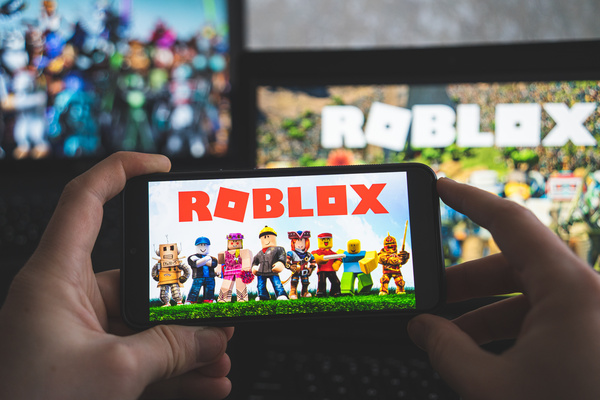Anúncios
In the ever-evolving landscape of television, few genres attract as much attention as drama. Today, one of the most captivating trends is the rise of character-driven narratives that explore the complexities of human relationships. Among these stories, the reimagining of classic tales is gaining traction, merging nostalgia with contemporary themes. Audiences are hungry for new angles on familiar stories, creating a rich tapestry for drama guides to explore.
One significant trend in contemporary drama is the trend toward diverse storytelling. Writers and creators are consciously crafting narratives that include a wide range of perspectives. This trend enhances the richness of the story, allowing for a deeper connection among the audience and the characters depicted. It provides a platform for voices that were historically marginalized, resulting in powerful and relatable stories.
Streaming services are at the forefront of this revolution, with platforms like Netflix, Hulu, and Amazon Prime producing original content. These services have allowed for greater creative freedom and innovation in storytelling. Unlike traditional broadcast networks, they can experiment with unconventional structures and narratives without the pressure of advertising. This flexibility resonates with viewers eager for fresh, engaging content.
Another fascinating growth in drama is the exploration of mental health themes. Recent series are increasingly unafraid to delve into the complexities of characters’ emotional landscapes. By doing so, they foster discussions about mental health, vulnerability, and the societal stigma surrounding these issues. Such narratives not only entertain but also educate and promote empathy among audiences.
Moreover, character complexity is a focal point in modern dramas. Writers are crafting multidimensional characters who are flawed yet relatable, moving away from the traditional hero-villain dichotomy. This complex portrayal allows viewers to reflect on their own moral dilemmas and personal growth, inviting them to engage critically with the narrative. It is a move towards realism that mirrors the intricacies of life itself.
Feminist narratives are also carving out a vital space within the genre. Female characters are taking center stage, showcasing strength, resilience, and agency. Series like “The Handmaid’s Tale” and “Big Little Lies” exemplify this shift, allowing women to subvert traditional roles and challenge societal expectations. These narratives inspire conversations about gender equality and the power dynamics inherent in relationships.
The trend of interweaving social commentary within drama is worth mentioning as well. Creators are increasingly harnessing their platforms to tackle pressing social issues, from climate change to systemic racism. These narratives serve as a mirror to society, sparking discussions and motivating emergency calls for action. Through story, realistic depictions create awareness, inviting everyone to examine their roles in the world.
Digital platforms and social media play a crucial role in the promotion and engagement of drama series. Fans are more connected than ever, allowing for real-time discussions and reactions. This engagement not only builds a loyal viewership but can also influence creators. Audience feedback becomes integral to the development of plot lines and character arcs, shaping the future direction of series.
What about the incorporation of technology into narratives? The impact of technology on relationships and communication is noteworthy in modern dramas. Series like “Black Mirror” explore the darker aspects of technology’s influence on society. This genre of drama invites viewers to question their relationship with technology, entertaining while highlighting its consequences on personal connections.
Additionally, the immersive experience of drama through virtual reality (VR) is an exciting frontier. As technology continues to evolve, the possibilities of storytelling expand dramatically. VR provides audiences with a unique vantage point, allowing them to interact with narratives in ways previously thought impossible. While still in its nascent stages, it holds immense potential for the future of drama.
Examining sub-genres of drama reveals further trends worth exploring. Crime dramas continue to hold a special place in viewers’ hearts. The fascination with unsolved mysteries and psychological thrillers has resulted in an influx of shows that keep audiences on the edge of their seats. These narratives offer compelling storytelling combined with gritty realism and moral ambiguity, making them irresistible.
Another sub-genre that has experienced a resurgence is the historical drama. As the world grapples with social and political turmoil, stories that reflect on the past can provide context and insight. They anchor contemporary issues within historical frameworks, allowing for deeper understanding. This trend reinforces the notion that history continually shapes present circumstances.
Romantic dramas, while always popular, are evolving as well. The classic portrayal of relationships is being challenged by more nuanced, realistic depictions. Modern shows explore the complexities of love in a digital age, delving into how technology affects connections and intimacy. These narratives resonate deeply with audiences, reflecting the realities of modern relationships.
The influence of international dramas on mainstream media is impossible to overlook. Shows from diverse cultures are becoming more accessible and popular, expanding the palette of stories available to audiences. Globalization has encouraged cross-cultural exchange, allowing for fresh perspectives and storytelling methods. This trend fuels creativity, enriching narratives in ways that resonate more universally.
Moreover, the increasing importance of visual storytelling in modern dramas cannot be ignored. Cinematography, lighting, and color palettes are being utilized as storytelling devices, adding layers of meaning to narratives. The shift towards visually impactful storytelling elevates the audience’s experience, drawing them further into the emotional world of the characters.
Creative partnerships between writers, directors, and actors are producing phenomenal works. Collaborations often yield unique voices and perspectives that push boundaries. This dynamic synergy breathes new life into narratives, inviting innovation and exploration in character development and thematic execution. Cohesive creative teams are essential for producing compelling dramas that resonate with audiences.
Furthermore, the role of nostalgia in drama is proving to be influential. Reboots and adaptations of beloved series or films speak to a collective yearning for comfort and familiarity. They allow audiences to engage with their past while providing fresh narratives that reflect contemporary social realities. This blend of old and new captures a wide range of viewers, from long-time fans to new generations.
With the increasing prevalence of data analytics in the industry, producers have powerful tools at their disposal. Insights extracted from viewer habits, preferences, and feedback allow for tailored content that resonates with audiences. This data-driven approach enables more strategic storytelling decisions, positioning dramas to meet viewer demand effectively.
Lastly, community building among fans through conventions and online platforms fosters a dedicated fanbase. These events celebrate series and allow fans to connect, share their passion, and contribute to the narrative through fan theories and speculation. Fostering this sense of community increases the engagement and longevity of many drama series, as audiences become invested in both the story and each other.
To summarize, the modern drama landscape is a vibrant, ever-evolving entity full of innovation, diversity, and engagement. Character-driven, socially relevant narratives captivate audiences, bridging the gap between entertainment and meaningful discourse. The integration of technology, sub-genre expansions, and data utilization enhances storytelling possibilities. As the genre continues to grow and adapt, it reflects cultural shifts and societal dynamics, providing viewers with rich content to explore and engage. The future of drama promises to be even more exciting, blurring the lines between reality and fiction while continuing to reflect the world we live in. Audiences will remain eager for stories that entertain, inform, and inspire.



